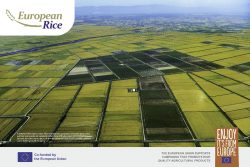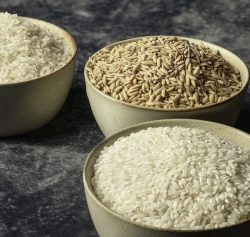 YOU probably know that rice is grown in Europe – mainly in Italy. Carnaroli, arborio and vialone are three varieties of rice which are used for risotto and are readily available in good food shops and supermarkets. You might think that was “European rice” – but in fact European rice is something different, grown in Greece for more than 70 years, but with a history that goes back more than 2,000 years.
YOU probably know that rice is grown in Europe – mainly in Italy. Carnaroli, arborio and vialone are three varieties of rice which are used for risotto and are readily available in good food shops and supermarkets. You might think that was “European rice” – but in fact European rice is something different, grown in Greece for more than 70 years, but with a history that goes back more than 2,000 years.
Rice was first introduced to Europe by what we would call naturalists who followed Alexander the Great in his all-conquering expeditions across Persia and into India, more than 2,000 years ago.
While it has a distinct food culture and is known for its astonishing heritage of immense buildings, philosophy, art, pottery, sculpture and its beautiful scenery, you don’t tend to associate Greece with paddy fields. In fact, the systematic cultivation of rice in Greece actually began in the 1950s and Greek rice is now in demand in both the domestic market and increasingly abroad.
 In 1949, the year marking the end of the fratricidal civil war, hope was offered to the beleaguered agricultural population in Greece by the Experimental Works in Macedonia Service (EWMS) in collaboration with the American Economic Mission in Greece. They chose the area of Chalastra, not far from Thessaloniki, to establish a trial rice cultivation, aiming to improve the saline soil in the estuaries of river Axios. The experiment was a huge success.
In 1949, the year marking the end of the fratricidal civil war, hope was offered to the beleaguered agricultural population in Greece by the Experimental Works in Macedonia Service (EWMS) in collaboration with the American Economic Mission in Greece. They chose the area of Chalastra, not far from Thessaloniki, to establish a trial rice cultivation, aiming to improve the saline soil in the estuaries of river Axios. The experiment was a huge success.
European rice flourishes in extremely wet conditions and mild temperatures. The conditions prevailing in the region, such as the brackish soil and warm climate, are ideal for attaining high yields and excellent quality, which is why rice production is still thriving in the area, decades later.
The rice-growing system is eco-friendly, with a lower carbon footprint than far eastern rice, and based on agricultural practices which respect the environment, protecting the health of the producer-cultivator, reducing the use of chemical inputs, improving quality and yield and reducing soil and underground water pollution.
Rice cultivation expands freshwater habitats in the region, principally during summer. The rice paddies function as artificial seasonal wetlands, complementing the natural ecosystem. During May, the paddies are flooded with water and ready for rice seeds. The flooded fields are filled with small spineless organisms and amphibians, attracting many birds, such as little egrets, black-crowned night herons, ibises and seagulls.
The traditional variety of European rice is Japonica. This is a rounder, thicker grained rice, which is also more ‘sticky’, making it a popular choice for dishes such as risotto, paella and sushi. Japonica accounts for around 75% of European production. The Indica variety, with its characteristic longer grain, accounts for the remaining 25% of total production. Indica is fluffy when cooked and, among other things, is great in rice puddings.